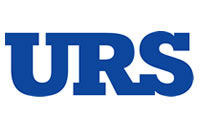Is your boss risk-averse? How to boost leadership credibility and your chances of getting projects approved.
By Tom Moriarty, Alidade MER
Plant Services, August 23, 2017
I’ve been delivering to supervisors and managers a set of workshops on the Accountability Model©, which is a methodology for developing good processes and measures, and then applying Productive Leadership© for disciplined execution of processes. At some point, usually during a break or at the end, someone will state, “I get it, but how do you get the project approved in the first place?” It’s a common problem. So, let’s explore it.
Whether you believe it or not, your boss is a human being. Human beings have amazingly complex structures in their brains. The nearly infinite number of neuron connections means we all look at things uniquely. One result is that people have different risk tolerances. It’s one reason why some people are accountants and others are NASCAR drivers.
It’s easy to say that so long as a business case is made, senior leaders will fall all over themselves to approve your initiative. But this assumes that the person pitching the business case has credibility, the business case is sound, and the decision-maker has enough fortitude to pull the trigger, so to speak. You can control only your own credibility and the quality of the business case. You can influence the decision-maker, but you can’t control him or her.
Credibility is about trust, which we can define as confidence in the thoughts and actions of others. Confidence in your thoughts and actions is based on the history of your performance in day-to-day activities and projects you’ve completed. The scope and scale of each initiative informs decision-makers on your judgment and the level of responsibility with which you can be entrusted.
On every initiative you undertake, do a business-case analysis. Find out what your organization views as the minimally acceptable rate of return (MARR) and payback period. These are usually something like 20% MARR and less than one or two years for payback. There may be a difference between the stated MARR and payback period and your decision-makers’ risk tolerance. Over time, you’ll get a feel for what individual decision-makers need to hear, and you’ll build up a library of estimating tools and techniques.
Completing a lot of smaller successful initiatives will accrue benefits. Building a track record of successes also means you can communicate frequently with your boss. Your interactions should be used to develop a rapport with your boss; you will get insights on your boss, and your boss will get more information on your dependability.
Keep track of the accumulated benefits from your projects. When you feel you have accumulated enough benefits, start introducing larger initiatives.
Introduce larger initiatives at a place and time when the boss is not under pressure (avoid crowds, and don’t do it shortly after a stressful event). Give a short, well-reasoned, and sufficiently detailed overview, and ask for the boss to take some time to consider it. Follow up a few days later with a scheduled meeting. You may not get approval for the whole enchilada, but maybe you’ll get approval for sub-projects that will help you get where you want to be.
Remember, risk tolerance and fortitude are individual characteristics. Most people in senior positions have direct experience with failed initiatives. Every failed initiative reinforces risk. Any initiative that fails reflects poorly on the decision-maker. It’s comfortable for decision-makers to stick with common practices in your organization’s industry. If the boss stays within industry norms, there is lower risk. Bosses with fortitude, however, will be open to solutions used by competitors and in other communities of practice.
Remember that your boss is playing the same credibility and fortitude game with his or her bosses. Your boss needs you to be credible, be able to present an excellent business case, and help manage the fortitude of higher-ups.
If your boss trusts you implicitly and you present strong business cases, and the organization still resists moving ahead, it’s a fortitude thing. You can wait out your current bosses and hope you get a new one who will be less risk-averse. You can wait for a major event that jerks everyone from their risk-averse safe space. You can continue to do what you’ve been doing and be satisfied with it. Or, you can update your resume and look for an organization that boasts leaders who have fortitude.


















